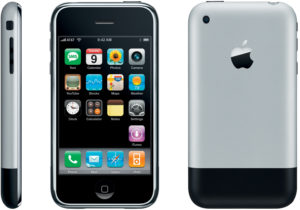In 2007, I wrote an article for Pragmatic Marketer magazine entitled “Easy to Use for Whom: Defining the Customer and User Experience for Enterprise Software.” I opened the article with:
“Enterprise software is only easy to use if the customers and users think it is easy to use. To determine “ease of use,” first understand the customer and user needs. To understand their needs, conduct research, iterate designs for validation, and evaluate the design for ease-of-use.”
That same month my article went to press, Apple announce the iPhone at Mac World. Steve Jobs said this about the first iPhone:
“We want to reinvent the phone… What’s the killer app? The killer app is making calls. It’s amazing how hard it is to make calls on phones.”
It featured a single physical button, called “home” so you would never get lost again down the phone menu rabbit hole. You controled the phone by sliding a finger across its touch-sensitive display – the iPhone was the first smartphone to use “multi-touch.” It had a visual voice-mail feature that allowed users to skip directly to voice mails they want to hear and a conference call feature that let users connect two calls with one touch of the screen. Even text messaging was made easier with user dialogue encased in bubbles, responsive sounds, and a touch keyboard appeared below for entering text. Proximity sensor shuts down the display and touchscreen when the phone was held to the ear, an ambient light sensor automatically adjusts screen brightness to save power, etc., etc. Apple had seemed to think of everything.

Why was this revolutionary? Why hadn’t other phone makers thought about these things? Apple had re-thought the phone experience. Apple took a customer-centric perspective when designing the iPhone like they did with everything they made. Apple conducted research, iterate designs for validation, and evaluate the design for ease-of-use. It is in the Apple design guidelines.
With the success of the iPhone, other companies have become interested in the magic of the human-centered design process and we are seeing better experiences across all types of products and services.